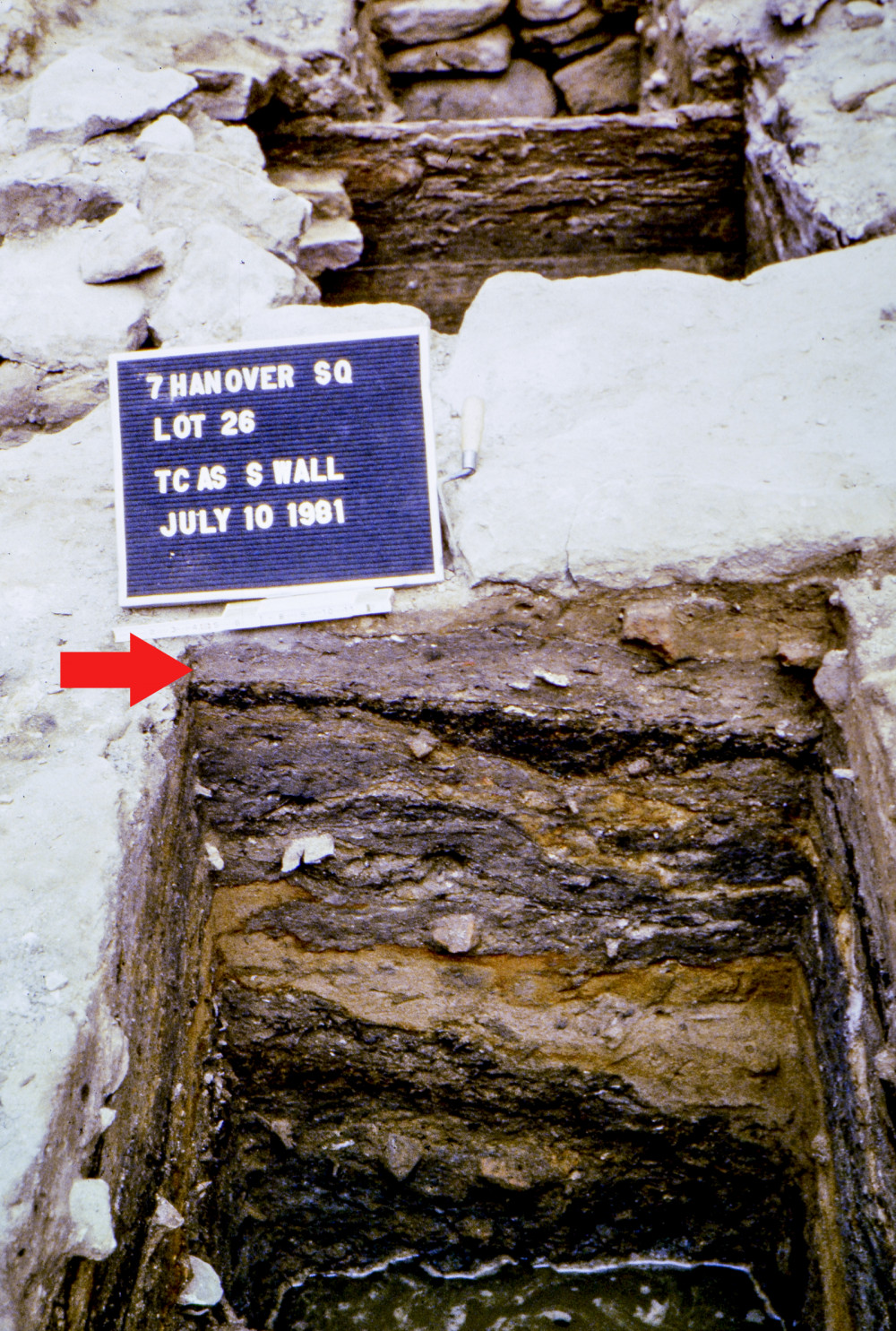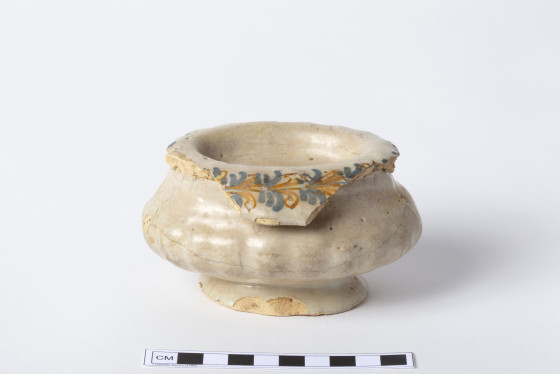This context (Catalog# 1105, Lot 26*, Test Cut AS, Stratum 2, Level a) consists of artifacts from one of the late 17th Century landfill deposits located in Lot 26*. Test Cut AS was the northernmost of the three test cuts which formed the "trench" placed to test the deposits in Lot 26*. The northernmost boundary of TC AS was placed just south of the location of the southernmost wall of the "patio" which occupied the center of Lots 9*, 10*, 26*, and 27*. The south wall of TC AS was located slightly north of another east-west stone wall. This wall was exposed in TC AR. Construction equipment had removed some of the deposits underlying the most recent Lot 9 basement floor south of the "outbuilding" foundation prior to the archaeological excavations in this portion of the site. Transit elevations indicate that at the location of TC AS, excavation began approximately three feet below the elevation of the basement floor. The topmost one to five inches of the TC AS deposits consisted of a hard-packed reddish-brown sandy silty overburden formed after the exposure of the excavation surface. The landfill deposits began immediately beneath this overburden. It should be noted that the surface elevation at the location of TC AS is about the same as that at which the landfill deposits were encountered in TC N, located six feet north of TC AS and excavated before the removal of the deposits immediately underlying the Lot 9 basement floor. This is consistent with the interpretation of the deposits in TC AS below the overburden as landfill. As shown on the TS AS profiles, the landfill deposits at this location sloped downward from east to west, rather than from north to south as was the case in TC N. The landfill deposits to a depth of roughly 18-24 inches below the TC AS datum contained pieces of what appeared to be burnt wood and sheets of rusted metal. The topmost portion of these deposits was browner and sandier while the material underlying was grayer and siltier. Immediately underlying this silty deposit was a stratum of reddish and orange/rust colored sands, followed by a deposit of gray siltier sand. The gray silt which underlay these deposits probably represents the river bottom silt underlying the landfill. The river bottom silt was encountered in TC N, approximately six feet north of TC AS, at an elevation approximately one to one and a half feet lower than the top of this silt stratum. This is consistent with the downward slope of the river bottom away from the Pearl street shoreline. This silt deposit was excavated only in the southernmost one foot of the test cut in order to expose the profile, and only the upper portion of this deposit was screened. The water table was encountered at 46 inches below the test cut datum and excavation terminated in the silt deposit several inches below this level.
The uppermost landfill deposits yielded 66 and 64 dated ceramic sherds, respectively, from the brown sandier and gray siltier material. The major difference in the ceramic assemblages from the two deposits is the presence of a greater percentage of combed slipware in the upper portion of the first deposit. However, the dates of manufacture of this ceramic type are not inconsistent with the identification of this deposit as landfill. Neither deposit had a particularly high density of building debris or faunal material. It should also be noted that none of the artifacts recovered from any of the deposits in TC AS are inconsistent with the period of deposition of the landfill. For more information about Test Cut AS and the landfill deposits in Lot 26*, please see pages 74-79 of the Seven Hanover Square site report.
-
Collection method
Excavated this context using shovels and trowels. All of the soil was dry screened using 1/4 inch mesh.
-
Soil
Brown mottled with charcoal and shell, black/brown with charcoal and metal, mottled gray/rust sandy silt
-
Soil description
Brown mottled with charcoal and shell flecking, black/brown sandy silt with much charcoal and oxidized metal, black/brown and mottled gray and rust colored sandy silt, black/brown sandy silt with heavy charcoal, mottled gray/rust sandy silt, blackened deposit of charcoal and burnt wood fragments



